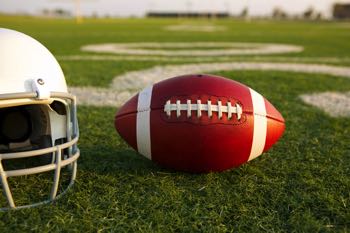 American football is considered to be the national sport in the United States of America and it is growing in popularity around the rest of the world too. Of course, just because something is popular doesn’t necessarily mean that the intricacies of it are well-known, so there will be numerous aspects of the game that are unknown to the less well-initiated.
American football is considered to be the national sport in the United States of America and it is growing in popularity around the rest of the world too. Of course, just because something is popular doesn’t necessarily mean that the intricacies of it are well-known, so there will be numerous aspects of the game that are unknown to the less well-initiated.
There are numerous pieces of equipment that you could do with knowing about, regardless of whether you want to watch the game or play it. Some of them are used for safety, whilst others are just part of the sport.
The Ball
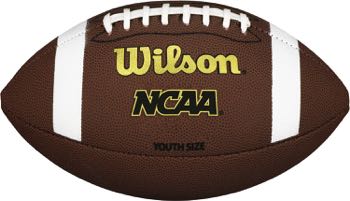 There is no better place to start when it comes to the world of American football than by looking at the ball that is used in matches. Also referred to as a ‘pigskin’, it looks like a similar shape to a lemon and tends to be made of cowhide leather. That is the material that is required for use in both professional and collegiate versions of the game in the States, whilst ones made of other materials tend to be used in less formal iterations. Between 1941 and 1969, the ball type used was known as ‘The Duke’, which returned to usage again in 2006 and has been used by the National Football League ever since.
There is no better place to start when it comes to the world of American football than by looking at the ball that is used in matches. Also referred to as a ‘pigskin’, it looks like a similar shape to a lemon and tends to be made of cowhide leather. That is the material that is required for use in both professional and collegiate versions of the game in the States, whilst ones made of other materials tend to be used in less formal iterations. Between 1941 and 1969, the ball type used was known as ‘The Duke’, which returned to usage again in 2006 and has been used by the National Football League ever since.
A regulation ball as used in the National Football League is 11 inches long and 28 inches around its circumference, give or take. A home team needs to have as many as 36 balls available for outdoor games, and 24 in use when it comes to indoor games. They will be pressure-tested by referees two hours before the start of a game to ensure that they meet with the requirements of the league. The officials will open 12 new footballs, which are sealed within a special box and have been shipped by the manufacturer, ahead of the starting time of the game. They’re marked with a ‘K’ and are used for kicking.
The Helmet
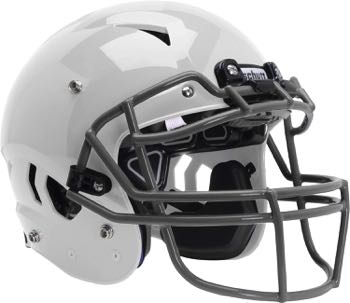 One of the most important parts of safety equipment for NFL players is the helmet. The first ones used were basically just leather head coverings that also protected the ears, but since then there have been major changes brought in in order to offer as much protection as possible. Modern technology allows designers to find the balance between safety and comfort, putting together a shell with jaw pads and a mouthguard. There is an integrated chin strap to keep it in place and a face mask, which protects players from suffering any damage even when involved in heavy tackles.
One of the most important parts of safety equipment for NFL players is the helmet. The first ones used were basically just leather head coverings that also protected the ears, but since then there have been major changes brought in in order to offer as much protection as possible. Modern technology allows designers to find the balance between safety and comfort, putting together a shell with jaw pads and a mouthguard. There is an integrated chin strap to keep it in place and a face mask, which protects players from suffering any damage even when involved in heavy tackles.
Radios
During a National Football League game, the quarterback is allowed to use a radio in order to receive instructions from the coach. These are built into the helmets, whilst the helmets that have a radio in them have to have a green dot on them in order to ensure that it is only the quarterback wearing one. In 2008, the NFL changed the rules in order to allow a defensive player to wear a radio too, also showing the green dot. The National Collegiate Athletic Association also brought in radios, allowing one defensive and one attacking player to wear one in 2024.
Jockstrap / Athletic Support
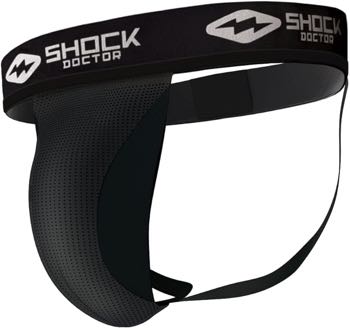 Obviously a jockstrap isn’t crucial, depending on the gender of the player. For those that do have a need for its use, however, there is little question that they might consider it to be one of the most important pieces of equipment that they own. It tends to be constructed of a wide elastic waistband that has a supportive pouch that is usually made of cotton, with some also being made up of elastic. It is there to support the genitals, sometimes also including a plastic protective cup that can stop the area from getting injured during the course of a tackle or some naughty tactics from the opposition.
Obviously a jockstrap isn’t crucial, depending on the gender of the player. For those that do have a need for its use, however, there is little question that they might consider it to be one of the most important pieces of equipment that they own. It tends to be constructed of a wide elastic waistband that has a supportive pouch that is usually made of cotton, with some also being made up of elastic. It is there to support the genitals, sometimes also including a plastic protective cup that can stop the area from getting injured during the course of a tackle or some naughty tactics from the opposition.
Cleats
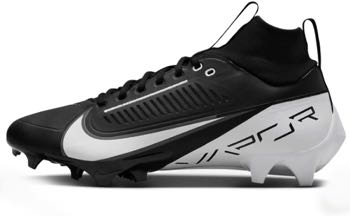 English sports fans will know these better as football boots, but in the United States of America they are often referred to as ‘cleats’. They are similar in nature to football boots, with soles that boast spikes that are designed to be worn and used on grass surfaces. Some of them are removable so that they can be replaced, with the sizes of the cleats changing depending on the weather and other conditions. If a game is taking place on artificial turf, with AstroTurf being the specific type, then what are known as ‘turf shoes’ will be worn as they have better grip.
English sports fans will know these better as football boots, but in the United States of America they are often referred to as ‘cleats’. They are similar in nature to football boots, with soles that boast spikes that are designed to be worn and used on grass surfaces. Some of them are removable so that they can be replaced, with the sizes of the cleats changing depending on the weather and other conditions. If a game is taking place on artificial turf, with AstroTurf being the specific type, then what are known as ‘turf shoes’ will be worn as they have better grip.
Shoulder Pads
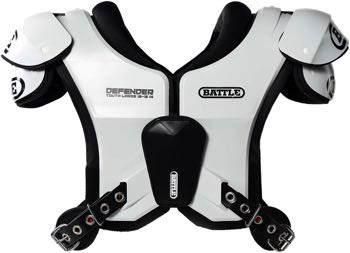 American football involves players effectively slamming into one another for tackles, often leading with their shoulders. As a result, the importance of good shoulder pads is crucial to ensuring that the players are as protected as possible. Modern ones are made of a hard plastic outer shell with foam padding under it that acts as shock-absorbing material. The pads, as the name suggests, go over the shoulders, but they also offer some protection to the rib area, being secured in place with buckles and straps. The shock of a tackle is then distributed around the wide pad area.
American football involves players effectively slamming into one another for tackles, often leading with their shoulders. As a result, the importance of good shoulder pads is crucial to ensuring that the players are as protected as possible. Modern ones are made of a hard plastic outer shell with foam padding under it that acts as shock-absorbing material. The pads, as the name suggests, go over the shoulders, but they also offer some protection to the rib area, being secured in place with buckles and straps. The shock of a tackle is then distributed around the wide pad area.
Jerseys & Pants
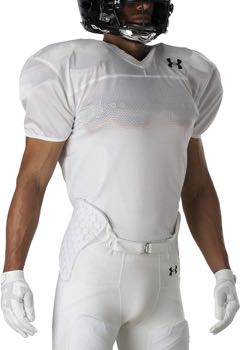 In any sport, one of the most important things that you need to be able to do is to identify the people who are on your team. This is the main purpose behind jerseys in the NFL, which are usually nylon on the front and back but spandex on the side so as to keep them taut. They have an extension on them that wraps around to the front in order to keep them tucked in and so stop opposition players from being able to grab them. Obviously, they are made of the team colours, whilst usually boasting a player’s name and number. Often, players will change their jersey at half-time if it is raining.
In any sport, one of the most important things that you need to be able to do is to identify the people who are on your team. This is the main purpose behind jerseys in the NFL, which are usually nylon on the front and back but spandex on the side so as to keep them taut. They have an extension on them that wraps around to the front in order to keep them tucked in and so stop opposition players from being able to grab them. Obviously, they are made of the team colours, whilst usually boasting a player’s name and number. Often, players will change their jersey at half-time if it is raining.
When it comes to the pants that National Football League players wear, they are made of nylon and mesh when used in practice or hot conditions and nylon and spandex for actual games. They tend to also be made up of the team colours, whilst zip-up flies are impractical so they usually have a lace-up fly instead. There are pockets on the inside of the pants to allow for pads to be placed in there, secured with a belt. These pads are there to protect the thigh as well as the knee, being placed into the pockets before the pants are put on by the players ahead of a game being played.
Girdle
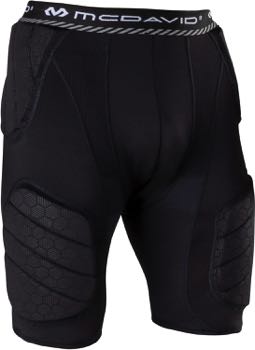 The pants aren’t the only thing that an American football player will use on the bottom part of their body. There are both five-piece and seven-piece girdles, which are used in order to offer as much protection as possible to a player’s hips, thighs and tailbone, amongst other vulnerable parts. They need to find the balance between being protective and flexible, so as to ensure that they aren’t going to interfere with a player’s need to run and tackle. The major difference between the five-piece and the seven-piece is simply about how much padding is included for the key areas.
The pants aren’t the only thing that an American football player will use on the bottom part of their body. There are both five-piece and seven-piece girdles, which are used in order to offer as much protection as possible to a player’s hips, thighs and tailbone, amongst other vulnerable parts. They need to find the balance between being protective and flexible, so as to ensure that they aren’t going to interfere with a player’s need to run and tackle. The major difference between the five-piece and the seven-piece is simply about how much padding is included for the key areas.
Gloves
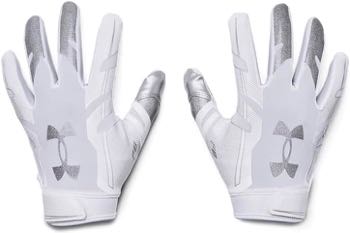 Although gloves aren’t an essential part of the equipment used by players in all positions, they are certainly something that receivers need to use in order to be able to catch the ball. They will often have a sticky palm, usually made of rubber, to allow the ball to be caught safely after having been thrown from a huge distance. Linemen will also wear gloves, not because they have to catch the ball but because they fight off opponents with their hands. Rather than being sticky, these gloves tend to boast thick padding to act as protection for their fingers and palms.
Although gloves aren’t an essential part of the equipment used by players in all positions, they are certainly something that receivers need to use in order to be able to catch the ball. They will often have a sticky palm, usually made of rubber, to allow the ball to be caught safely after having been thrown from a huge distance. Linemen will also wear gloves, not because they have to catch the ball but because they fight off opponents with their hands. Rather than being sticky, these gloves tend to boast thick padding to act as protection for their fingers and palms.
Other Pads
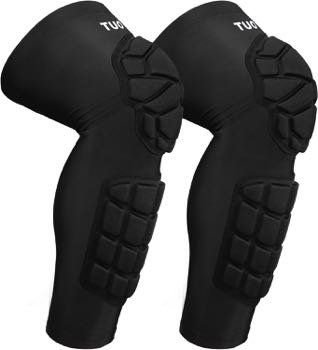 As you might well have worked out by now, padding is a crucial part of any National Football Player’s equipment. Given how heavily they’re tackled during a game, offering as much protection as possible to their uniform is a key part of keeping them safe. The girdles will provide some thigh padding, but some players may choose to add more padding to the area if they’re happy to sacrifice some mobility and speed for the added protection. Knee pads can also be a really important part of keeping players as physically safe as possible, protecting a vulnerable area from heavy tackles.
As you might well have worked out by now, padding is a crucial part of any National Football Player’s equipment. Given how heavily they’re tackled during a game, offering as much protection as possible to their uniform is a key part of keeping them safe. The girdles will provide some thigh padding, but some players may choose to add more padding to the area if they’re happy to sacrifice some mobility and speed for the added protection. Knee pads can also be a really important part of keeping players as physically safe as possible, protecting a vulnerable area from heavy tackles.
Equipment Managers
In the modern world of the NFL, equipment managers take on a hugely important role. Teams use a huge amount of equipment, which is why someone needs to be in charge of ensuring that it is all where it needs to be and in good working order. Even something like chewing gum can be of vital importance to a team, even if it’s just from a moral point of view rather than a safety one. The team’s equipment manager is responsible for all of the stuff that players wear, but also for bringing in such luxuries like the chewing gum or chemical hand-warmers, managing the logistics of getting everything to where it needs to be.
